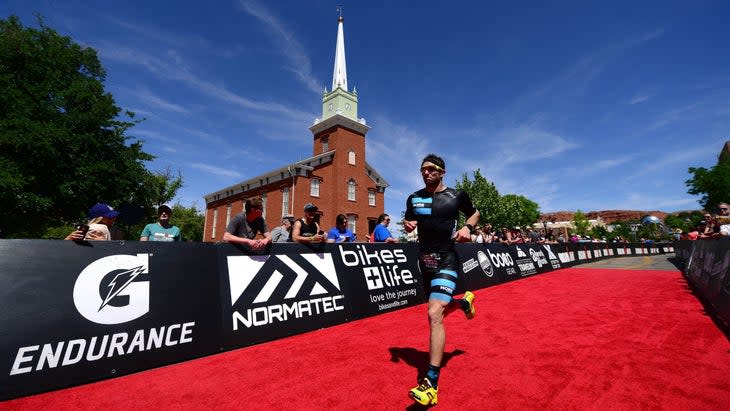How to Estimate Your Triathlon Finishing Time
Triathlete
Congratulations! You've signed up for a triathlon. Maybe it's your first. Maybe you've done one before, but want to try a new distance. Maybe you want to give your spectator squad an idea about where and when they can cheer you on. So you're wondering, based on all your workouts, how long will the race take you? How can you estimate your triathlon finish time?
If you know how fast you swim, bike, and run, it stands to reason that you could estimate how long it might take you to finish the race. However, there are many variables that make this challenging.
Weather conditions and terrain play a big part in pacing on race day. Total distance is another factor that not only affects speed, but also the extra time that must be added for transitions. Plus, many athletes make the mistake of basing their estimate on best times or PRs achieved during training, which results in a predicted finisher's time that might be an unlikely best-case scenario. Even if you pick a reasonable average from your single sport workouts to base your estimation upon, you likely weren't doing all three events back-to-back, which can lead to fatigue and slower overall times.
How to estimate your triathlon time
The first thing to keep in mind is that your times will differ from regular training and a triathlon estimate shouldn't be based on your best race times for each stand-alone sport.
"You should be able to point to training sessions or other races as evidence to support your estimates; otherwise, you're just guessing," said Russell Cox, a triathlon coach and data expert, who has crunched the numbers on thousands of age-group finishes.
Instead, it's best to base estimates on training sessions or workouts that target race-specific intensity. This might consist of purposeful long rides and runs at goal pace or key interval sessions for shorter races.
Another factor to consider is your level of triathlon experience. Olivia Dietzel, owner of LivFit Coaching, explains that finishing times for pros or elite age-group athletes will be much more predictable, because these athletes regularly push themselves during testing and in hard training sessions. They also have previous performances that can be analyzed to create more accurate estimates. On the other hand, middle-of-the-pack age-groupers or beginners might not be accustomed to the intensity that comes with racing and may not really have similar efforts or results to compare.
"These athletes often struggle to break down mental barriers to let themselves physically push their bodies to the limits during fitness tests or hard training sessions, making it hard to predict what they're truly capable of," she said.
As a general rule of thumb, Dietzel expects that most age-group athletes can hold a zone 2 heart rate or effort for an Ironman, zone 3 for a 70.3, zone 4 for an Olympic, and high zone 4 to zone 5 for a sprint. In the build-up to a big event, race simulations provide a testing ground where those zones can be refined and translated into pace, power numbers, and times.
RELATED: How to Use Heart-Rate Training Zones for Triathlon
Another trick is to look at past race results from the event you're targeting to give a sense of whether a course might be slower or faster than you anticipate. "If it's a particularly hilly bike course, you can't use your flat time trial to determine your potential speed," Cox noted.
Also, be sure to consider external factors that could have a big impact on your race time, like temperature, wind, humidity, water conditions, altitude, terrain, and course layout.

Average triathlon finish times
It also helps to have an idea of average finishing times for different distances. You probably have a general idea of how you compare to an average athlete, based on your training and level of fitness, but you might surprise yourself!
For exclusive access to all of our fitness, gear, adventure, and travel stories, plus discounts on trips, events, and gear, sign up for Outside+ today.]]>

